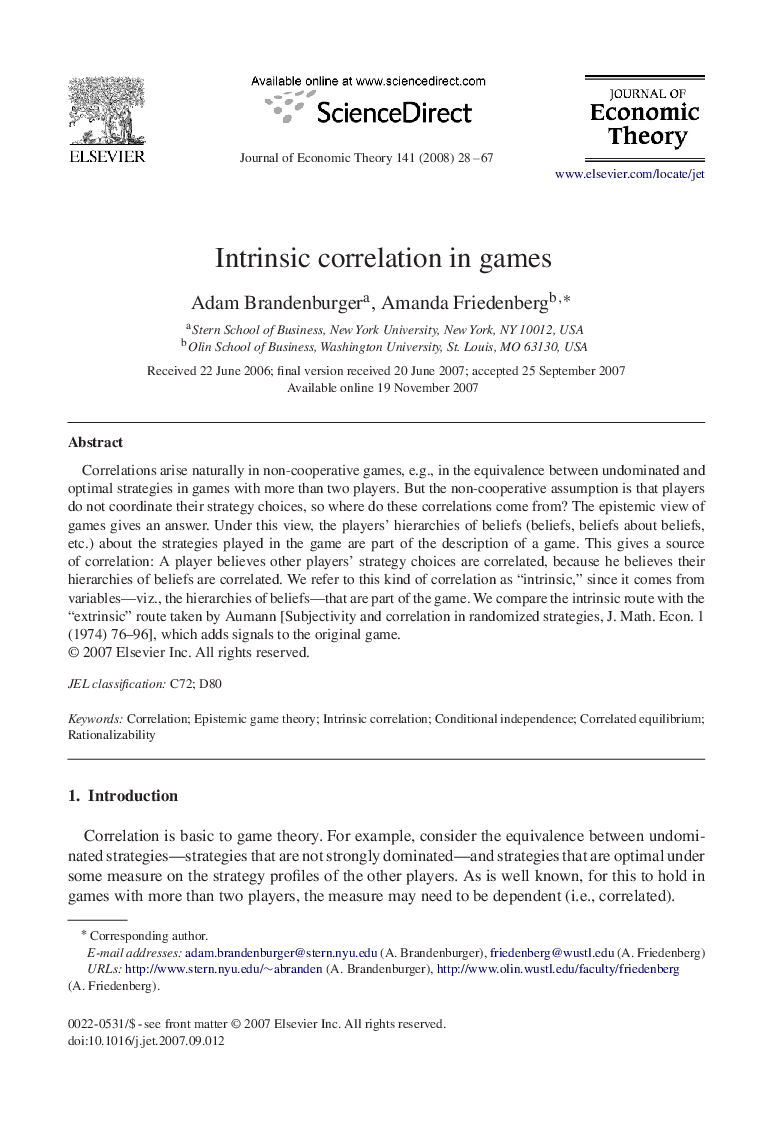| Article ID | Journal | Published Year | Pages | File Type |
|---|---|---|---|---|
| 957664 | Journal of Economic Theory | 2008 | 40 Pages |
Correlations arise naturally in non-cooperative games, e.g., in the equivalence between undominated and optimal strategies in games with more than two players. But the non-cooperative assumption is that players do not coordinate their strategy choices, so where do these correlations come from? The epistemic view of games gives an answer. Under this view, the players’ hierarchies of beliefs (beliefs, beliefs about beliefs, etc.) about the strategies played in the game are part of the description of a game. This gives a source of correlation: A player believes other players’ strategy choices are correlated, because he believes their hierarchies of beliefs are correlated. We refer to this kind of correlation as “intrinsic,” since it comes from variables—viz., the hierarchies of beliefs—that are part of the game. We compare the intrinsic route with the “extrinsic” route taken by Aumann [Subjectivity and correlation in randomized strategies, J. Math. Econ. 1 (1974) 76–96], which adds signals to the original game.
